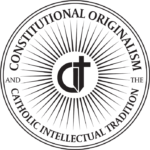adjudication-related considerations in Sheetz v. El Dorado
The Supreme Court’s recent decision in Sheetz v. El Dorado County (2024) features a unanimous opinion for the Court by Justice Barrett and separate concurring opinions by three other Justices (Sotomayor joined by Jackson; Gorsuch solo; and Kavanaugh joined by Kagan and Jackson). These separate opinions address themselves in different ways to the narrow scope of what was decided in the opinion for the Court.
The question presented was whether conditions imposed on building permits are exempt from regulatory takings scrutiny because they are imposed pursuant to legislation rather than administratively. The Court answers this question “no.”
Sotomayor (joined by Jackson) wrote separately to note that there is an antecedent question, one not addressed by the Court, which is “whether the permit condition would be a compensable taking if imposed outside the permitting context.”
Gorsuch wrote separately both to note that the Court’s opinion did not address another question and also to suggest that this question had an easy answer. This was the question “whether the Nollan/Dolan test [i.e. the test that governs the Takings Clause inquiry in this context] operates differently when an alleged taking affects a ‘class of properties’ rather than ‘a particular development.’” The easy answer to this question, implied Gorsuch, was “no.”
If this question was so easy, why didn’t the Court address it? It appears that at least three Justices have a different view than Gorsuch. Kavanaugh (joined by Kagan and Jackson) concurred “to underscore that the Court has not previously decided—and today explicitly declines to decide—whether ‘a permit condition imposed on a class of properties must be tailored with the same degree of specificity as a permit condition that targets a particular development.’” The reason to underscore the limited nature of the Court’s decision, presumably, is to prevent others from reading that opinion to have resolved the issue.
From this brief description of the scope of the opinions, the question naturally arises how the Court decided to calibrate the breadth or narrowness of this opinion. The answer to this question is not something that one tries to answer as a matter of constitutional interpretation. The answer turns instead on the nature of the judicial function within the particular place in the judicial hierarchy occupied by the Supreme Court of the United States, together with a justice’s understanding of how best to carry out that function as a single individual on a multimember appellate court with jurisdiction that is both limited and discretionary. To the extent that these kinds of understanding are informed by a distinctive theory, that would be a theory of adjudication rather than a theory of interpretation or law.

